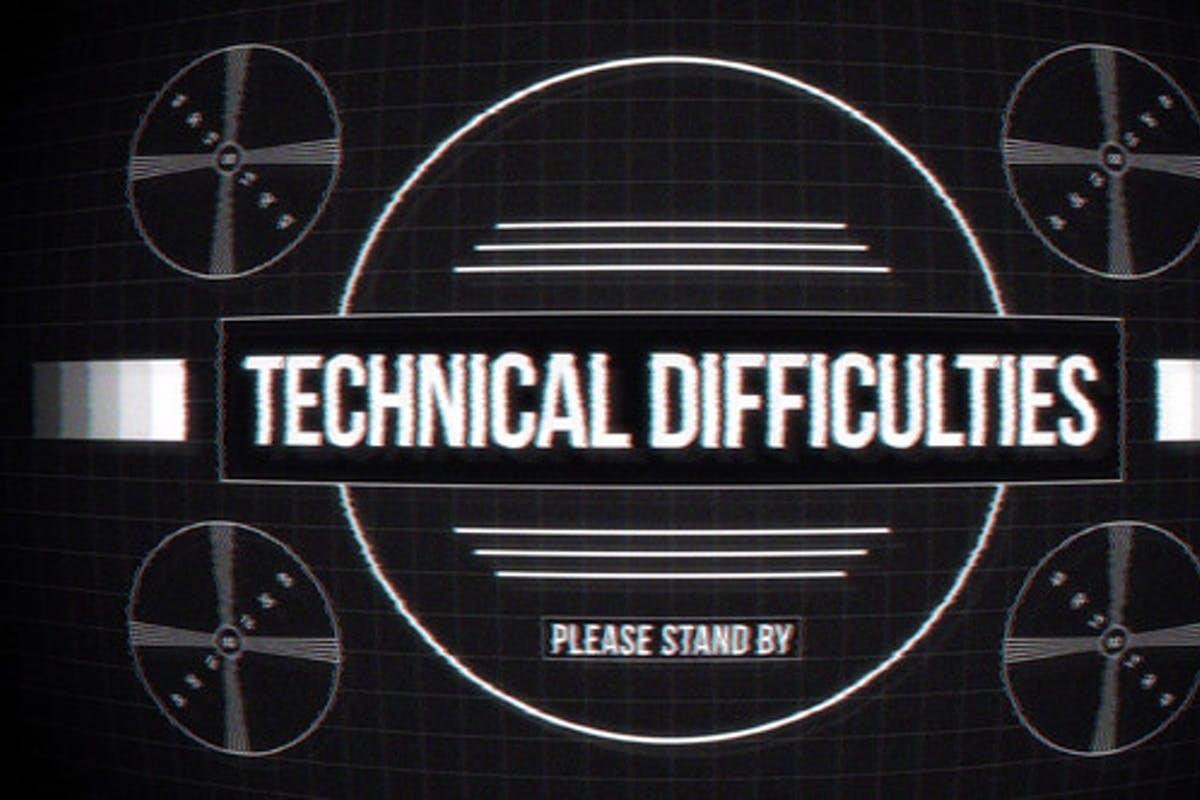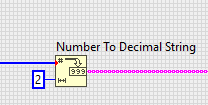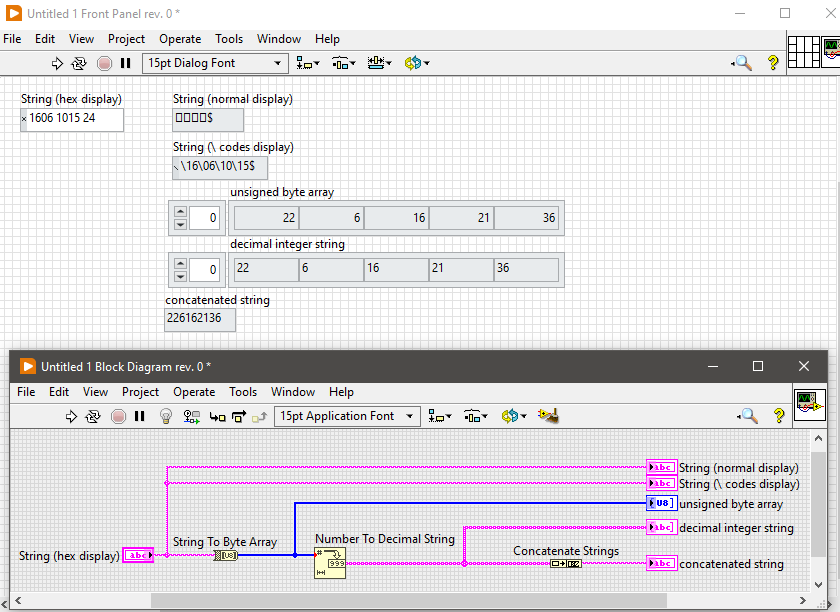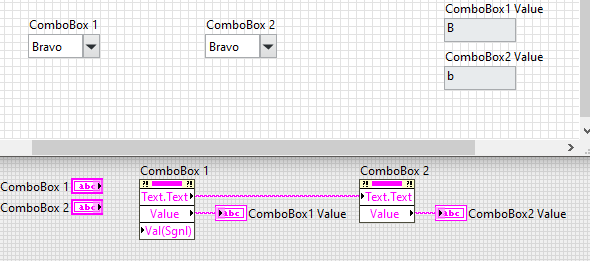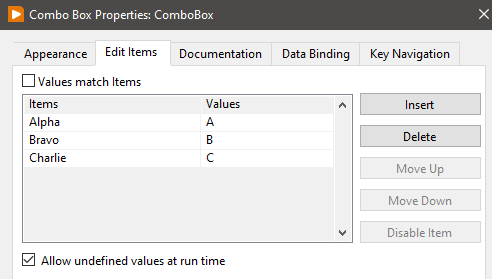-
Posts
391 -
Joined
-
Last visited
-
Days Won
16
Content Type
Profiles
Forums
Downloads
Gallery
Everything posted by Bryan
-
I'm just now hearing of the word 'eggcorn' as well. The definition sounds like something that I have often done intentionally while talking with friends for comedic effect.
-
The solution is in your image on the "Status" line. Activation is required, which means that you have to purchase a license from NI for the module to continue using it past November 23rd.
-
You're very welcome! The Community edition for Ubuntu should, (I emphasize, should) hopefully install without any modifications to installation scripts.
-

I Con not install dsc by vipm for labview2016
Bryan replied to Danial Nasser's topic in LabVIEW General
I saw it under his avatar and thought it was strange, and maybe I had missed an announcement or something, but went with it since, like Antoine Chalons said: it's a selectable option. -

I Con not install dsc by vipm for labview2016
Bryan replied to Danial Nasser's topic in LabVIEW General
I've never used this package, but I figured I would see if I could help a little as the large font seems to convey a sense of urgency. Per the package information release notes, does your setup meet all of the requirements for the package - including having the LabVIEW DSC 2010 or higher already installed? If not, the Data logging & Supervisory Control Module is an add-on toolkit that must be purchased separately from NI. Were there any other errors or messages that may have popped up during package installation? Any additional information you can provide may be helpful to anyone else on here who may have used the module or any developers that may stumble upon this thread. This also appears to have been released back in 2016 - so I'm not sure if there are any compatibility issues that may arise with later versions of LabVIEW (e.g. LabVIEW 2024 as shown under your avatar). -
Out of curiosity, what distribution are you using (or considering using)? I've been able to install LabVIEW Community Edition on both Zorin and Linux Mint and created a little "How To" on installation for these two distributions for LabVIEW 2021 Community Edition. FYI - NI has a limited number of distributions for which they support LabVIEW for Linux, mostly those using RPM - but there is some support for Debian based distros, though installation is not completely straightforward.
-
I've confirmed that this method also works with installing LabVIEW 2021 SP1 Community Edition on Linux Mint 21.2. In the "INSTALL" and "utils/install_helpers.sh" files, replace all instances of "ubuntu" with "ubuntu|linuxmint".
- 3 replies
-
- linux mint 21.2
- zorin 16
-
(and 1 more)
Tagged with:
-
I would hope that if an employer were to say that they were switching to something else, opportunities (and funding) for proper training would also be offered and utilized. Though I know that's not always the case. I've seen first hand (though maintenance and update of LabVIEW code with my current employer) the effects of mandating a new programming language and people learning on their own without training (taken or offered).
-
When I said at least one, I meant whichever one that I feel would be more beneficial to my own career ambitions, be it Python, Rust, etc. I didn't (mean to) infer that they were generic and interchangeable, (I know better than that). For me though, my introduction and programming experience has primarily been in LabVIEW. Changing my mental process to go from a graphical to a text based language feels like it would be more difficult for me than switching between text-based languages. As I said though, I realize that there are differences ranging from simply syntax to the more drastic.
-
I've had similar thoughts over the past few years. My introduction to the programming world was LabVIEW. I've dabbled in a few text-based languages, but not enough to become anywhere near proficient. Perhaps I should choose at least one and begin attempting to become proficient as I'm also looking in the 20-something year range until retirement.
-
Looks like homework to me. You'll never learn how to use LabVIEW if you try to cheat and get others to do your work for you.
- 10 replies
-
- project
- programming
-
(and 1 more)
Tagged with:
-

Where do y'all get your (free) artwork for UI elements?
Bryan replied to David Boyd's topic in User Interface
I sometimes create my own using Paint or GIMP. More often than not, it's some web searches for icons or graphics that I can use. Of course, most of my graphics are for programs that are used internal to my organization. If it were to be also output as a deliverable product, I'd have to ensure that I'm not violating any creative rights/licensing. -

LabVIEW deep reinforcement learning is upcoming !!!
Bryan replied to Youssef Menjour's topic in Announcements
I may be dating myself a bit here, but I remembered that from the original Simpson's episode. I don't recall if the meme or the episode would be older. Would that still check out? LOL! -

LabVIEW deep reinforcement learning is upcoming !!!
Bryan replied to Youssef Menjour's topic in Announcements
"In Soviet Russia, moon hit you!" -
-
Is the 1606 1015 24 the hex values that would be shown in a string control/indicator when displayed in "Hex Display" mode (in "\ Codes" display it would be "\16\06\10\15$")? If so, see below:
-
Property nodes, such as the linked ones that I have shown in my screenshots above, are linked to the controls/indicators within that particular VI/scope, which is what I thought you were wanting to do. I didn't know that you were wanting to involve moving control and manipulation of them into subVIs. In different VI (i.e. subVI), you're in a completely different scope, and the control reference(s) will have to be passed to that new VI from the calling VI(s). LabVIEW tried to do that for you automatically, and you'll have to create references for the control(s) that you want to handle in your subVI. This can begin to get messy if you're new to using (unlinked) property/invoke nodes. I recommend spending some time learning about them before going too much further in your coding. Screenshots of your code will help us provide better assistance, but right now I'm not 100% sure exactly what you're trying to accomplish as the context of the original post seems to be evolving.
-
Sure, you could read the "Text.Text" property from ComboBox1 and write it to a "Text.Text" property for ComboBox2. The caveats would be that your "Items" would have to be named exactly the same, and that you'd have to pay attention to the order of execution. Best way to force order of exec is using property nodes even for the values. Others may have better approaches than I can suggest, but I've never had to do this before, so I'm mocking up quick examples for you. Below is an example where I use lowercase values for the 2nd combo box.
-
It appears that the decimal "6" is being provided as a 32 bit integer based on your description. You'll need to convert it to an 8 bit integer before type casting. Without seeing your code, I made an assumption and created the example below, which returns the hex value "6" for the month of June:
-
If you're familiar with Property Nodes, you can use the "Strings and Values []" property for access to both the "Items" and "Values" defined in the combo box. Additionally, you can use the "Text.Text" property to get the displayed text (i.e. "Items"), while the value will always be that from the "Values" defined.
-
Have you tried searching NI or the Rohde & Schwarz websites for LabVIEW drivers?
-
I've been playing with this a little more and I believe a simpler way may be to have a string indicator that can show/hide a list box on "Mouse Enter/Leave". Here's a little example I whipped up quickly. Again, probably not a preferred or the best way, but doable. Note - I found that ensuring that the hidden/visible items list needs to have key focus if it's going to need to "appear" over another control or indicator, at least in my limited testing of it. Hover Menu Example.vi
-
Someone else may know a better way to do it, but I was curious, so I did a quick google search and found this on the NI forums. I downloaded the "Menu_demo2_vi" and made a couple of modifications to the event structure - adding some "Mouse Enter" and "Mouse Leave" events to the event case that toggles visibility. I don't consider this to be a very streamlined solution and would opt for something better if available. But, it's at least proof that the behavior can be emulated in LabVIEW somehow. (Attached file is in LabVIEW 2020) Menu_demo3..vi
-
I agree, the LabVIEW Advanced Virtual Architects Forums need more of this type of informative and riveting content. Thank you @ensegre for saving me from wasting a full 16:49 of my life watching the video. I watched approximately 20 seconds (cumulatively, while mostly skipping around), which was enough for me to confirm that there was nothing to pique my interest before exiting the video. I found the music too annoying for me to tolerate more than that.
-

How deep is you inheritance tree?
Bryan replied to Antoine Chalons's topic in Object-Oriented Programming
I never necessarily had a defined depth limit in my mind of how many levels I would deem too be overkill. For my uses, 1-3 just always seemed to be where it ended for me.

